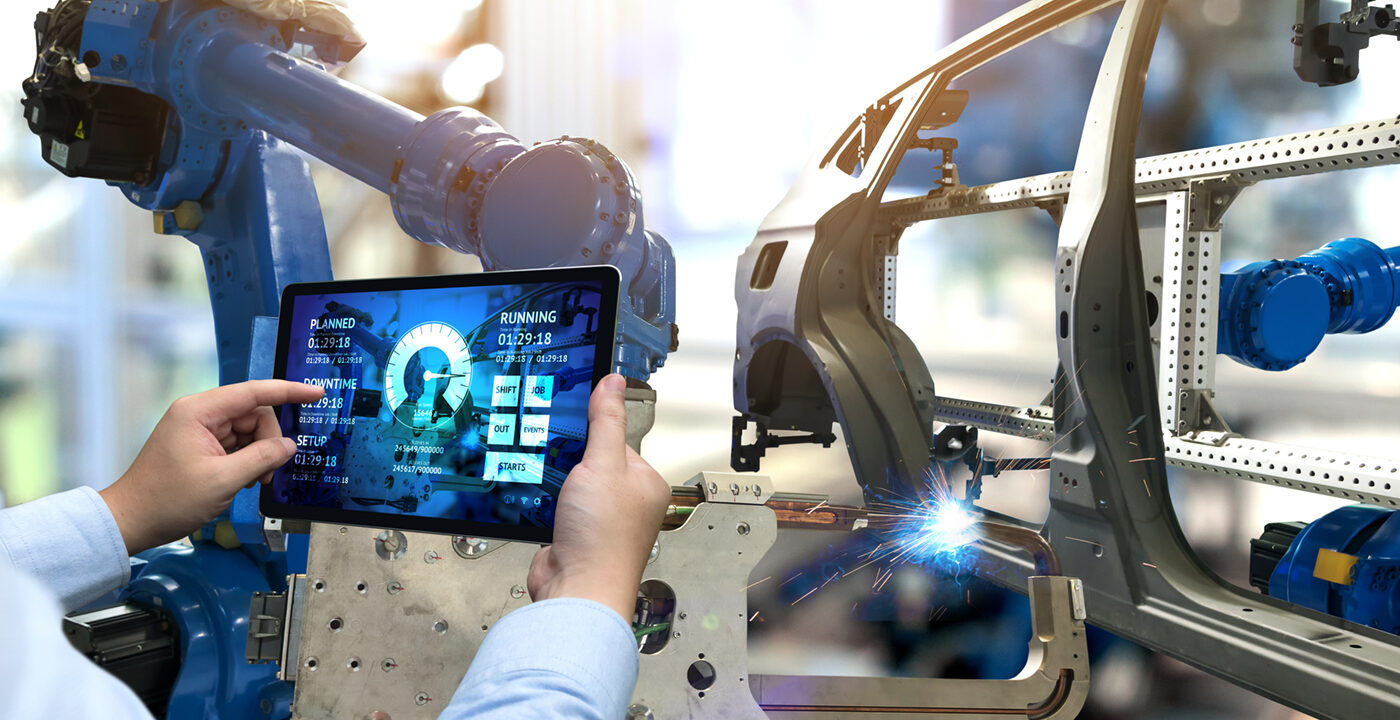The way industries approach equipment maintenance is changing rapidly with the advancement of new technologies. Traditional reactive maintenance approaches where machines are fixed only after failure is no longer optimal in today’s highly automated and connected industrial environment. Modern industries are increasingly adopting condition-based predictive maintenance strategies using machine condition monitoring techniques to reduce downtime and increase equipment reliability. This article explores the growing role of machine condition monitoring in enabling predictive maintenance practices.
What is Machine Condition Monitoring?
Machine condition monitoring (MCM) refers to the process of using sensors to continuously monitor the operational condition of machines to detect early signs of faults or deterioration. MCM systems collect data on various machine parameters like vibration, temperature, pressure, flow etc. using sensors embedded onboard equipment or added externally. This real-time operational data is analyzed to identify patterns and trends that can indicate developing problems before failures occur. MCM uses techniques like vibration analysis, thermography, oil analysis, corrosion monitoring etc. to closely track the “health” of machines.
Benefits of Machine Condition Monitoring
Increased Uptime and Productivity: Detecting faults early through MCM means repairs can be scheduled during planned downtime instead of failures causing unexpected stoppages. This increases overall equipment effectiveness (OEE).
Cost Savings on Maintenance: By making repairs proactively based on trend analysis instead of reactively after failures, total maintenance costs reduce significantly over the long run. Fewer spare parts need stocking too.
Improved Safety: Catching developing issues fast prevents accidents that can occur from equipment failures. Workers face fewer risks from unexpected outages too.
Optimized Repair Budgeting: Advance warning from MCM helps estimate future repairs better and budget maintenance expenditures efficiently over the lifecycle of assets.
Enhanced Asset Management: Detailed equipment condition data aids evidence-based decisions on repair vs replacement along with effective capacity planning.
Machine Condition Monitoring Technologies
Various technologies are used for different machine condition monitoring applications depending on the equipment type and parameters to track:
Vibration Analysis: Vibration sensors are most common as vibrations reveal imbalances and defects developing inside rotating components like motors, pumps etc.
Thermography: Infrared cameras detect temperature variations across surfaces indicating electrical or mechanical faults creating localized hotspots.
Oil Analysis: Testing lubricant samples identifies wear metal contamination and reveals the condition of internal engine parts.
Corrosion Monitoring: Specialty probes measure environmental factors promoting corrosion to spot damage before it spreads.
Acoustic Emission Sensing: Microphones listen for distinctive sounds indicating failures like cracks, leaks in process vessels, pressure vessels etc.
Ultrasonic Testing: Ultrasound examines material thickness, detects voids and flaws too small for human inspection. Especially used for pipes, tanks etc.
While individual technologies focus on specific parameters, modern predictive maintenance leverages multi-sensor “intelligence at the edge” gateways collecting correlated data for accurate condition evaluations. Technology advancements continue to expand MCM capabilities.
Implementing a Machine Condition Monitoring Program
The first step is identifying critical equipment whose condition must be monitored closely for safety, productivity or cost reasons. Machines with history of unexpected downtime, high repair costs or safety incidents are logical starts. Next, install relevant Machine Condition Monitoring sensors on these machines based on failure modes analysis identifying key parameters to track. Sensor selection depends on machine type, application, parameters to monitor and data collection requirements.
Wireless vibration sensors that transmit readings to online gateways for example are common initial choices requiring minimal wiring overhaul on production floors. Assessing data connectivity options from remote/harsh sites is also important depending on chosen sensors. Parallelly educate staff on planned monitoring strategy, change management and establishing equipment-sensor associations clearly. Finally commission the online MCM system through guided sensor configuration and performance testing.
Data Analytics – The Heart of Machine Condition Monitoring
Once real-time sensor measurements start flowing in, the essence shifts to analyzing equipment condition trends hidden in the data. MCM systems apply techniques like vibration signature analysis, temperature trend mapping, oil debris monitoring etc. to diagnose abnormalities versus normal operation. Machine learning predictive algorithms further auto-learn equipment fingerprints to detect even slightest deviations hinting future issues.
Periodic reports evaluate equipment and alarm thresholds need review as conditions evolve. Equipment history databases also capture past work, repairs to establish baselines against current sensor readings. Analysis integrates additional context like production parameters, operator logs to eliminate false alarms from external factors too. Maintaining analysis rule-books centrally helps scale monitoring across similar equipment fleets too.
Remote access to dashboards remotely diagnoses potential faults for production teams too. Analytics insights ultimately drive work order generation/scheduling aligning with ongoing operations and budgets. Over time, advanced diagnostics expand reliability centered maintenance (RCM) programs benefiting overall asset management. Data also evaluates monitoring ROI for justifying expansions too.
Evolving Machine Condition Monitoring
IIoT Enablement: Integrating online monitoring networks with industrial IoT platforms facilitate remote access, inter-machine correlations plus integration touchpoints for maintenance/operations.
Edge Intelligence: Edge gateways run AI/ML models to autonomously pre-process sensor data, classify incipient faults before streaming anomalies upwards only. This retains critical analytics at machine-side.
Predictive Maintenance Maturity: Data powers more sophisticated RUL (Remaining Useful Life) predictions, workload-based maintenance scheduling optimizing part/resource needs exactly.
Augmenting Inspections: Digital twins track machine histories to guide physical audits. AR/VR moreover assists remote experts inspect/troubleshoot sites anywhere.
Condition-Based Overhauls: Strategic maintenance shifts from fixed schedules to flexible, demand-driven overhauls indicated precisely by equipment health tracking.
Integration is key to extracting full value from condition monitoring investments. By coupling online monitoring networks with maintenance management and operational systems, industries realize true predictive capabilities revolutionizing how they care for assets and maximize productivity sustainably in the digitally connected factory of future.
Machine condition monitoring is increasingly becoming fundamental to predictive maintenance strategies driving Industry 4.0 goals of optimizing asset performance. The technologies continue advancing to deliver more accurate equipment diagnostics assisting data-driven decisions. When properly implemented as an integrated part of industrial asset management programs, condition monitoring promises significant benefits enhancing reliability, safety, affordability and overall competitiveness for modern industries.
*Note:
1. Source: Coherent Market Insights, Public sources, Desk research
2. We have leveraged AI tools to mine information and compile it


